-
-
Space seems so incredibly vast and empty, but there is a lot hidden inside that seemingly empty void. From fungal spores to charged bucky balls. Radiation in space seeps everywhere and makes long term space travel dangerous for humans, but fungal spores cope just fine. Radiation can also cause beautiful light shows like the aurora but can make light tough for astronauts. How can we use social media to track the beautiful aurora light shows? How do we clean a space ship or space station?
References:- L. Orr, S. C. Chapman, J. W. Gjerloev. Directed network of substorms using SuperMAG ground‐based magnetometer data. Geophysical Research Letters, 2019; DOI: 10.1029/2019GL082824
- American Geophysical Union. (2019, June 27). Space station mold survives high doses of ionizing radiation: New research presented at the 2019 Astrobiology Science Conference in Bellevue, Wa.. ScienceDaily. Retrieved July 7, 2019 from www.sciencedaily.com/releases/2019/06/190627121252.htm
- M. A. Cordiner, H. Linnartz, N. L. J. Cox, J. Cami, F. Najarro, C. R. Proffitt, R. Lallement, P. Ehrenfreund, B. H. Foing, T. R. Gull, P. J. Sarre, S. B. Charnley. Confirming Interstellar C60 Using the Hubble Space Telescope. The Astrophysical Journal, 2019; 875 (2): L28 DOI: 10.3847/2041-8213/ab14e5
Episodes

Monday Jul 29, 2019
Monday Jul 29, 2019
As the climate changes different species are at risk. Some will thrive and others will struggle, so how do we target conservation efforts to better protect at risk species? Deforestation is a big issue in developing countries, but is there a win-win for the population and the planet? When sea levels rise, we think about flooding and erosion, but not what will happen to the forests and birds who live in them. Trees in the city live fast and die young, which means we need a whole new set of forest management techniques.
References:
- Paul J. Taillie, Christopher E. Moorman, Lindsey S. Smart, Krishna Pacifici. Bird community shifts associated with saltwater exposure in coastal forests at the leading edge of rising sea level. PLOS ONE, 2019; 14 (5): e0216540 DOI: 10.1371/journal.pone.0216540
- C. David L. Orme, Sarah Mayor, Luiz dos Anjos, Pedro F. Develey, Jack H. Hatfield, José Carlos Morante-Filho, Jason M. Tylianakis, Alexandre Uezu, Cristina Banks-Leite. Distance to range edge determines sensitivity to deforestation. Nature Ecology & Evolution, 2019; DOI: 10.1038/s41559-019-0889-z
- Ian A. Smith, Victoria K. Dearborn, Lucy R. Hutyra. Live fast, die young: Accelerated growth, mortality, and turnover in street trees. PLOS ONE, 2019; 14 (5): e0215846 DOI: 10.1371/journal.pone.0215846
- Johan A. Oldekop, Katharine R. E. Sims, Birendra K. Karna, Mark J. Whittingham, Arun Agrawal. Reductions in deforestation and poverty from decentralized forest management in Nepal. Nature Sustainability, 2019; DOI: 10.1038/s41893-019-0277-3

Monday Jul 22, 2019
Episode 336 - Life frozen in time inside extreme ice
Monday Jul 22, 2019
Monday Jul 22, 2019
Ice can be refreshing and cooling, but it can also be used to preserve life. Sometimes for strangely long periods of time. So just how do you make extreme forms of ice? From 'warm ice that doesn't ruin your frozen food, to controlled ice that helps planes fly. Sometimes you can even use a diamond to make some super controlled ice. Ice can harbour life even in some extreme conditions like the frozen and UV radiated Andes. Buried in Alaska is a bacterial community frozen in time. For 50,000 years bacteria have been thriving beneath layers of frozen tundra.
References:
- Yong-Jae Kim, Yun-Hee Lee, Sooheyong Lee, Hiroki Nada, Geun Woo Lee. Shock growth of ice crystal near equilibrium melting pressure under dynamic compression. Proceedings of the National Academy of Sciences, 2019; 116 (18): 8679 DOI: 10.1073/pnas.1818122116
- Lara Vimercati, Adam J. Solon, Alexandra Krinsky, Pablo Arán, Dorota L. Porazinska, John L. Darcy, Cristina Dorador, Steven K. Schmidt. Nieves penitentes are a new habitat for snow algae in one of the most extreme high-elevation environments on Earth. Arctic, Antarctic, and Alpine Research, 2019; 51 (1): 190 DOI: 10.1080/15230430.2019.1618115
- University of Washington. (2019, July 12). Super salty, subzero Arctic water provides peek at possible life on other planets. ScienceDaily. Retrieved July 13, 2019 from www.sciencedaily.com/releases/2019/07/190712105707.htm
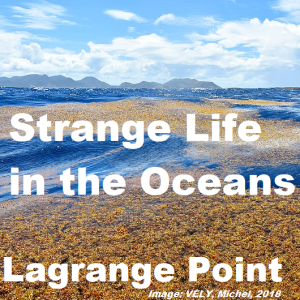
Sunday Jul 14, 2019
Sunday Jul 14, 2019
Water, water everywhere but not a drop to drink or nutrient for that matter. The Ocean can sometimes be a inhospitable place with barely any nutrients to survive off. Other times it can be home to large ocean spanning algae blooms. The oceans from the Pacific to the Atlantic can hold lots of secrets (even fresh water) beneath the surface. This week we look at 3 different papers which outline strange parts of the ocean, from large algae blooms to hidden aquifers.
References:
- Greta Reintjes, Halina E. Tegetmeyer, Miriam Bürgisser, Sandi Orlić, Ivo Tews, Mikhail Zubkov, Daniela Voß, Oliver Zielinski, Christian Quast, Frank Oliver Glöckner, Rudolf Amann, Timothy G. Ferdelman, Bernhard M. Fuchs. On-Site Analysis of Bacterial Communities of the Ultraoligotrophic South Pacific Gyre. Applied and Environmental Microbiology, 2019; 85 (14) DOI: 10.1128/AEM.00184-19
- Mengqiu Wang, Chuanmin Hu, Brian B. Barnes, Gary Mitchum, Brian Lapointe, Joseph P. Montoya. The great Atlantic Sargassum belt. Science, 2019; 365 (6448): 83 DOI: 10.1126/science.aaw7912
- Chloe Gustafson, Kerry Key, Rob L. Evans. Aquifer systems extending far offshore on the U.S. Atlantic margin. Scientific Reports, 2019; 9 (1) DOI: 10.1038/s41598-019-44611-7
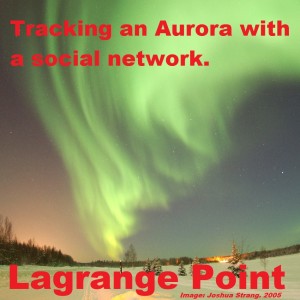
Sunday Jul 07, 2019
Lagrange Point Episode 334 - Hidden in empty space
Sunday Jul 07, 2019
Sunday Jul 07, 2019
|
|
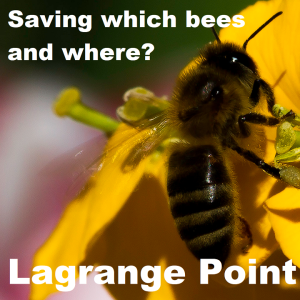
Sunday Jun 30, 2019
Episode 333 - Saving which bees and where
Sunday Jun 30, 2019
Sunday Jun 30, 2019
Saving the bees has gotten widespread understanding, but it is more nuanced than a simple sound bite. Which bees are in danger and where? How many bee species are out there and are under threat? Can domesticated bees spread disease to wild populations? How do wild flowers help feed bees but also spread disease? Can different types of crop cycles help both wild and domesticated bees thrive? We know of colony collapse disorder and pesticides, but what other threats are out there to bee populations? Does the urban sprawl play a role in destabilising the gender balance of the bee populations? Why do bee populations drop off as you approach the city?
References:
- Samantha A. Alger, P. Alexander Burnham, Humberto F. Boncristiani, Alison K. Brody. RNA virus spillover from managed honeybees (Apis mellifera) to wild bumblebees (Bombus spp.). PLOS ONE, 2019; 14 (6): e0217822 DOI: 10.1371/journal.pone.0217822
- Dimitry Wintermantel, Jean-François Odoux, Joël Chadœuf, Vincent Bretagnolle. Organic farming positively affects honeybee colonies in a flower-poor period in agricultural landscapes. Journal of Applied Ecology, 2019; DOI: 10.1111/1365-2664.13447
- Gordon Fitch, Paul Glaum, Maria-Carolina Simao, Chatura Vaidya, Jill Matthijs, Benjamin Iuliano, Ivette Perfecto. Changes in adult sex ratio in wild bee communities are linked to urbanization. Scientific Reports, 2019; 9 (1) DOI: 10.1038/s41598-019-39601-8

Monday Jun 24, 2019
Episode 332 - Affordable, smart and helpful prosthetics
Monday Jun 24, 2019
Monday Jun 24, 2019
Getting a prosthetic limb to feel natural and comfortable without spending a fortune is incredibly difficult. Plus the human body (and prosthetics) change over time. So how can you make a prosthetic better match it's user? We look at three stories of adaptive prosthetics and finding ways to make use of new technology to help improve lives. From building an elaborate treadmill contraption to hearing through your fingers.
When you stumble your brain goes into overdrive to keep you standing, but what exactly does it do?
Affordable and comfortably fitting prosthetic limbs are especially important for children who grow out of them quickly. How can we make them more responsive?
Hearing words clearly in a noisy environment is especially hard on those with hearing aids. But can your fingers help out?
Vanderbilt University researchers built an elaborate treadmill to trip people, with the goal of helping advance prosthetic research.
Using 3D scanning, printing and embedded sensors, researchers are making prosthetic better matched to their users.
People often say look with your eyes not your fingers, but can you use your fingers to hear as well?
Embedding sensors into 3D printed prosthetics can help adapt the design to better suit the actual wear and tear from the body.
Using an elaborate tripping contraption on a treadmill, Vanderbilt university researchers hope to stop prosthetic leg users falling over.
- Yuxin Tong, Ezgi Kucukdeger, Justin Halper, Ellen Cesewski, Elena Karakozoff, Alexander P. Haring, David McIlvain, Manjot Singh, Nikita Khandelwal, Alex Meholic, Sahil Laheri, Akshay Sharma, Blake N. Johnson. Low-cost sensor-integrated 3D-printed personalized prosthetic hands for children with amniotic band syndrome: A case study in sensing pressure distribution on an anatomical human-machine interface (AHMI) using 3D-printed conformal electrode arrays. PLOS ONE, 2019; 14 (3): e0214120 DOI: 10.1371/journal.pone.0214120
- Shane T. King, Maura E. Eveld, Andrés Martínez, Karl E. Zelik, Michael Goldfarb. A novel system for introducing precisely-controlled, unanticipated gait perturbations for the study of stumble recovery. Journal of NeuroEngineering and Rehabilitation, 2019; 16 (1) DOI: 10.1186/s12984-019-0527-7
- Katarzyna Cieśla, Tomasz Wolak, Artur Lorens, Benedetta Heimler, Henryk Skarżyński, Amir Amedi. Immediate improvement of speech-in-noise perception through multisensory stimulation via an auditory to tactile sensory substitution. Restorative Neurology and Neuroscience, 2019; 37 (2): 155 DOI: 10.3233/RNN-190898

Monday Jun 17, 2019
Episode 331 - Making modern technology less energy intensive
Monday Jun 17, 2019
Monday Jun 17, 2019
Our modern world relies on energy, and some of it produce a lot of carbon dioxide. How can we make everything from air travel to wearable tech be less carbon intensive? Is there a way to make jet fuel or power ships that is carbon neutral? Just how much energy do crypto currency burn up? What is the impact of all this Bitcoin speculation on the health of the planet? From Fitbits to smart watches and Pokemon Go, wearable tech is a big trend, but how can we make these devices power themselves. There is a lot of excess energy when we walk and move, so can we use this to power our technology?
References:
- ETH Zurich. (2019, June 13). Carbon-neutral fuel made from sunlight and air. ScienceDaily. Retrieved June 15, 2019 from www.sciencedaily.com/releases/2019/06/190613103146.htm
- Christian Stoll, Lena Klaaßen, Ulrich Gallersdörfer. The Carbon Footprint of Bitcoin. Joule, 2019; DOI: 10.1016/j.joule.2019.05.012
- Michael G. Stanford, John T. Li, Yieu Chyan, Zhe Wang, Winston Wang, James M. Tour. Laser-Induced Graphene Triboelectric Nanogenerators. ACS Nano, 2019; DOI: 10.1021/acsnano.9b02596
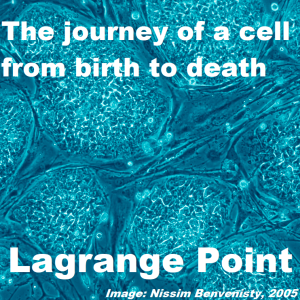
Monday Jun 10, 2019
Episode 330 - A cells journey, from birth to death
Monday Jun 10, 2019
Monday Jun 10, 2019
This week we dive into the complicated history of cells and try to figure out if you are still the same ship. How does a cell know what it wants to grow up to be? What helps it make the decision to be an optic nerve, a neuron or part of your jawbone? How old are all the cells in your body? Are they all the same age, and what does age even mean anyway? This week we dive into the complicated history of cells and try to figure out if you are still the same ship.
References:
- Rafael Arrojo e Drigo, Varda Lev-Ram, Swati Tyagi, Ranjan Ramachandra, Thomas Deerinck, Eric Bushong, Sebastien Phan, Victoria Orphan, Claude Lechene, Mark H. Ellisman, Martin W. Hetzer. Age Mosaicism across Multiple Scales in Adult Tissues. Cell Metabolism, 2019; DOI: 10.1016/j.cmet.2019.05.010
- Ruslan Soldatov, Marketa Kaucka, Maria Eleni Kastriti, Julian Petersen, Tatiana Chontorotzea, Lukas Englmaier, Natalia Akkuratova, Yunshi Yang, Martin Häring, Viacheslav Dyachuk, Christoph Bock, Matthias Farlik, Michael L. Piacentino, Franck Boismoreau, Markus M. Hilscher, Chika Yokota, Xiaoyan Qian, Mats Nilsson, Marianne E. Bronner, Laura Croci, Wen-Yu Hsiao, Jean-Francois Brunet, Gian Giacomo Consalez, Patrik Ernfors, Kaj Fried, Peter V. Kharchenko, Igor Adameyko. Spatiotemporal structure of cell fate decisions in murine neural crest. Science, 2019; 364 (6444): eaas9536 DOI: 10.1126/science.aas9536
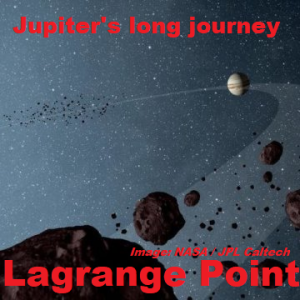
Monday Jun 03, 2019
Episode 329 - Mysteries from the formation of our solar systems
Monday Jun 03, 2019
Monday Jun 03, 2019
There are many things we don't understand from the formation of our solar system. Why did Jupiter end up with weird asymmetrical groupings of asteroids around it? Is there a region of dust free space around the sun? If there is why can't we find it? What caused the beautiful rings of dust millions of kms wide around Venus and Mercury? Where did that dust come from? All these questions and more as we unpack the hidden parts of our solar system.
References:
- Petr Pokorný, Marc Kuchner. Co-orbital Asteroids as the Source of Venus's Zodiacal Dust Ring. The Astrophysical Journal, 2019; 873 (2): L16 DOI: 10.3847/2041-8213/ab0827
- S. Pirani, A. Johansen, B. Bitsch, A.J. Mustill, D. Turrini. Consequences of planetary migration on the minor bodies of the early solar system. Astronomy & Astrophysics, 2019; DOI: 10.1051/0004-6361/201833713
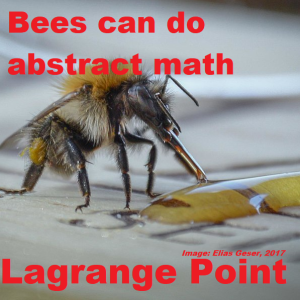
Monday May 27, 2019
Episode 328 - Mathematics and Nature, from Bees to Choruses of Frogs
Monday May 27, 2019
Monday May 27, 2019
Mathematics is not just something humans can perform. It's present across the universe and especially in nature. So can animals understand abstract mathematical concepts? Can we learn from the different complicated algorithms and mathematical models used by animals to improve the internet of things? What can social media help tell us about both human and animal tourists to nature reserves?
References:
- Scarlett R. Howard, Aurore Avarguès-Weber, Jair E. Garcia, Andrew D. Greentree, Adrian G. Dyer. Numerical cognition in honeybees enables addition and subtraction. Science Advances, 2019; 5 (2): eaav0961 DOI: 10.1126/sciadv.aav0961
- Ikkyu Aihara , Daichi Kominami , Yasuharu Hirano and Masayuki Murata. Mathematical modelling and application of frog choruses as an autonomous distributed communication system. Royal Society Open Science, 2019 DOI: 10.1098/rsos.181117
- Anna Hausmann, Tuuli Toivonen, Christoph Fink, Vuokko Heikinheimo, Henrikki Tenkanen, Stuart H.M. Butchart, Thomas M. Brooks, Enrico Di Minin. Assessing global popularity and threats to Important Bird and Biodiversity Areas using social media data. Science of The Total Environment, 2019; DOI: 10.1016/j.scitotenv.2019.05.268
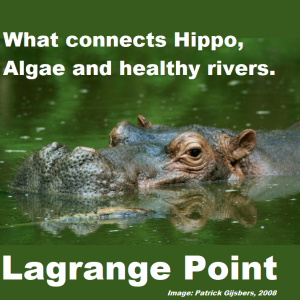
Monday May 20, 2019
Episode 327 - Hippos and Algae, Lions and Porcupines, plus Narwhals.
Monday May 20, 2019
Monday May 20, 2019
What connects Hippos, Algae and keeping the rivers of Africa healthy? What causes Lions to square-off against Porcupines? What is keeping the Narwhal population healthy despite it's genetic diversity? We look at the strange interconnection between species and how small changes in one ecosystem can destabilise a whole species.
Hippos help keep the rivers and lakes of Africa healthy...through their poo.
Hippos are essential in pumping silicon from the savannah into the rivers and lakes of Africa.
Lions hunt lots of creatures, but what needs to happen for them to try attacking a Porcupine?
Porcupines vs Lion sounds like a March Mammal Madness battle, but what causes a Lion to go after such a tough prey?
The Narwhals population is rebounding but it its still at risk due to it's shallow gene pool.
Can a species survive with a shallow gene pool?
References:
- Schoelynck, J., Subalusky, A.L., Struyf, E., Dutton, C.L., Unzué-Belmonte, D., Van de Vijver, B., Post, D.M., Rosi, E.J., Meire, P., Frings, P. Hippos (Hippopotamus amphibius): The animal silicon pump. Science Advances, 2019 DOI: 10.1126/sciadv.aav0395
- Julian C. Kerbis Peterhans, Gastone G. Celesia, Thomas P. Gnoske. Lion-Porcupine Interactions in Africa, Including Impacts on Lion Predatory Behavior. Journal of East African Natural History, 2019; 108 (1): 1 DOI: 10.2982/028.108.0101
- Westbury, M.V. Narwhal genome reveals long-term low genetic diversity despite current large abundance size. iScience, 2019 DOI: 10.1016/j.isci.2019.03.023
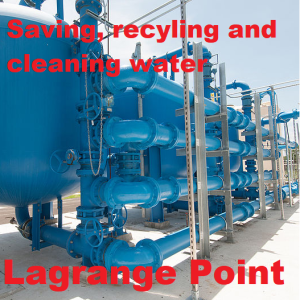
Monday May 13, 2019
Episode 326 - Capturing, reusing, recycling and cleaning water.
Monday May 13, 2019
Monday May 13, 2019
Water is essential for life, but we need to take care of the complete water cycle. Treating waste water can help remove harmful pollutants from cosmetics and medication. Industrial processes and landfill can also make super salty water, that we need to clean before releasing. Without good water management then we can end up without water in times of drought, and in times of flood more water than we can handle. This week we find out about ways to better manage the most precious of resources, water.
References:
- Qian Yang, Bridget R Scanlon. How much water can be captured from flood flows to store in depleted aquifers for mitigating floods and droughts? A case study from Texas, US. Environmental Research Letters, 2019; 14 (5): 054011 DOI: 10.1088/1748-9326/ab148e
- Rui Zhao, Tingting Ma, Shuying Li, Yuyang Tian, Guangshan Zhu. Porous Aromatic Framework Modified Electrospun Fiber Membrane as a Highly Efficient and Reusable Adsorbent for Pharmaceuticals and Personal Care Products Removal. ACS Applied Materials & Interfaces, 2019; 11 (18): 16662 DOI: 10.1021/acsami.9b04326
- Chanhee Boo, Robert K. Winton, Kelly M. Conway, Ngai Yin Yip. Membrane-less and Non-evaporative Desalination of Hypersaline Brines by Temperature Swing Solvent Extraction. Environmental Science & Technology Letters, 2019; DOI: 10.1021/acs.estlett.9b00182
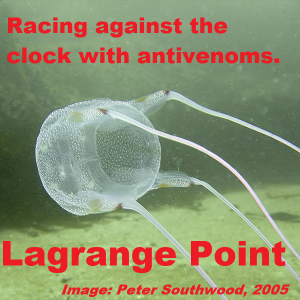
Monday May 06, 2019
Episode 325 - Racing against time, from Box Jellyfish to Alzheimers
Monday May 06, 2019
Monday May 06, 2019
Medicine is often a race against time, to diagnose, to develop and to treat. This week we're looking at new research which speeds up the detection of Alzheimers in patients and provides a chance to test out potential treatments. We also find out how University of Sydney researchers may help deliver a quick antivenom to those stung by the deadly box jellyfish. Plus ways to turn leftover bits of junk in blood plasma, into useful diagnosis tools that may help save time and lives in treatment without wasting more time on tests.
References:
- Man-Tat Lau, John Manion, Jamie B. Littleboy, Lisa Oyston, Thang M. Khuong, Qiao-Ping Wang, David T. Nguyen, Daniel Hesselson, Jamie E. Seymour, G. Gregory Neely. Molecular dissection of box jellyfish venom cytotoxicity highlights an effective venom antidote. Nature Communications, 2019; 10 (1) DOI: 10.1038/s41467-019-09681-1
- Maria D Giraldez, Ryan M Spengler, Alton Etheridge, Annika J Goicochea, Missy Tuck, Sung Won Choi, David J Galas, Muneesh Tewari. Phospho-RNA-seq: a modified small RNA-seq method that reveals circulating mRNA and lncRNA fragments as potential biomarkers in human plasma. EMBO Journal, 2019 DOI: 10.15252/embj.2019101695
- Andreas Nabers, Henning Hafermann, Jens Wiltfang, Klaus Gerwert. Aβ and tau structure-based biomarkers for a blood- and CSF-based two-step recruitment strategy to identify patients with dementia due to Alzheimer's disease. Alzheimer's & Dementia: Diagnosis, Assessment & Disease Monitoring, 2019; 11: 257 DOI: 10.1016/j.dadm.2019.01.008
Medicine is often a race against time, to diagnose, to develop and to treat. This week it's stories of scientists and doctors racing against the clock.
New research which speeds up the detection of Alzheimer's in patients and provides a chance to test out potential treatments.
We find out how University of Sydney researchers may help deliver a quick antivenom to those stung by the deadly box jellyfish.
Plus ways to turn leftover bits of junk in blood plasma, into useful diagnosis tools that may help save time and lives in treatment without wasting more time on tests.
There are whole bundles of random RNA fragments in blood plasma, but these can be used to help diagnose specific issues.
The box jellyfish is just one of the many things in Australia that is trying to kill you, but now it's slightly less deadly thanks to University of Sydney researchers.
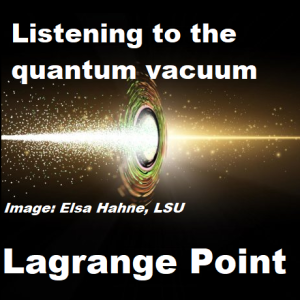
Monday Apr 29, 2019
Monday Apr 29, 2019
Hunting for missing dark matter or gravitational waves involves incredibly precise measurements. Scientists are constantly developing new measurement techniques to try and find new sources of data and test theories. Whether it be staring at the space between Andromeda and the Milky Way to find primordial black holes, to looking in the remnants of a white dwarf using spectroscopy. Plus ways to make the newer generation of gravitational wave detectors more accurate by listening to quantum noise.
References:
- Hiroko Niikura, Masahiro Takada, Naoki Yasuda, Robert H. Lupton, Takahiro Sumi, Surhud More, Toshiki Kurita, Sunao Sugiyama, Anupreeta More, Masamune Oguri, Masashi Chiba. Microlensing constraints on primordial black holes with Subaru/HSC Andromeda observations. Nature Astronomy, 2019; DOI: 10.1038/s41550-019-0723-1
- Christopher J. Manser, Boris T. Gänsicke, Siegfried Eggl, Mark Hollands, Paula Izquierdo, Detlev Koester, John D. Landstreet, Wladimir Lyra, Thomas R. Marsh, Farzana Meru, Alexander J. Mustill, Pablo Rodríguez-Gil, Odette Toloza, Dimitri Veras, David J. Wilson, Matthew R. Burleigh, Melvyn B. Davies, Jay Farihi, Nicola Gentile Fusillo, Domitilla De Martino, Steven G. Parsons, Andreas Quirrenbach, Roberto Raddi, Sabine Reffert, Melania Del Santo, Matthias R. Schreiber, Roberto Silvotti, Silvia Toonen,†, Eva Villaver, Mark Wyatt, Siyi Xu, Simon Portegies Zwart. A planetesimal orbiting within the debris disc around a white dwarf star. Science, 2019 DOI: 10.1126/science.aat5330
- Jonathan Cripe, Nancy Aggarwal, Robert Lanza, Adam Libson, Robinjeet Singh, Paula Heu, David Follman, Garrett D. Cole, Nergis Mavalvala, Thomas Corbitt. Measurement of quantum back action in the audio band at room temperature. Nature, 2019; DOI: 10.1038/s41586-019-1051-4
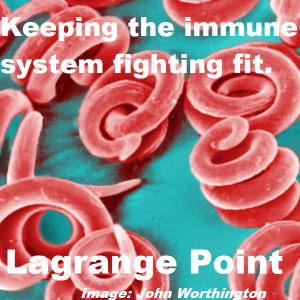
Monday Apr 22, 2019
Lagrange Point Episode 323 - Keeping your immune system in fighting shape
Monday Apr 22, 2019
Monday Apr 22, 2019
How can we keep our immune systems in fighting shape? What happens when our immune systems are responding well or are missing key genes? is there targeted gene therapies that can be used to help save lives of those most at risk from infection? How does our body hunt down and stop Listeria in it's tracks? Plus undercooked wild game or pork can lead to parasitic infections, but how does the body fight back?
References:
- E Mamcarz et al. Lentiviral gene therapy with low dose busulfan for infants with X-SCID. The New England Journal of Medicine, April 17, 2019; DOI: 10.1056/NEJMoa1815408
- Kazuhito Sai, Cameron Parsons, John S. House, Sophia Kathariou, Jun Ninomiya-Tsuji. Necroptosis mediators RIPK3 and MLKL suppress intracellular Listeria replication independently of host cell killing. The Journal of Cell Biology, 2019; jcb.201810014 DOI: 10.1083/jcb.201810014
- Nicola Steel, Aduragbemi A. Faniyi, Sayema Rahman, Stefanie Swietlik, Beata I. Czajkowska, Bethany T. Chan, Alexander Hardgrave, Anthony Steel, Tim D. Sparwasser, Mushref B. Assas, Richard K. Grencis, Mark A. Travis, John J. Worthington. TGFβ-activation by dendritic cells drives Th17 induction and intestinal contractility and augments the expulsion of the parasite Trichinella spiralis in mice. PLOS Pathogens, 2019; 15 (4): e1007657 DOI: 10.1371/journal.ppat.1007657
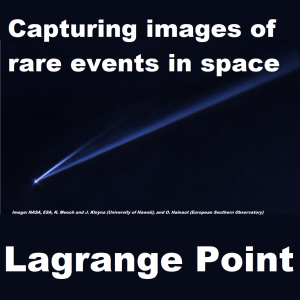
Monday Apr 15, 2019
Episode 322 - Imaging strange objects in space (and on earth)
Monday Apr 15, 2019
Monday Apr 15, 2019
Taking images of strange objects in space is incredibly complicated and requires both large telescopes, and even larger teams of scientists to pour over the data. Techniques, codes and algorithms to sift through that data to find the unusual patterns is an incredibly difficult and challenging task. However with it we can capture some incredible things whether it be images of black holes, to asteroids literally spinning themselves apart, or even missing endangered species here on earth.
References:
- Iowa State University. (2019, March 27). Data flows from NASA's TESS Mission, leads to discovery of Saturn-sized planet. ScienceDaily. Retrieved April 13, 2019 from www.sciencedaily.com/releases/2019/03/190327174701.htm
- NASA/Goddard Space Flight Center. (2019, March 28). Hubble watches spun-up asteroid coming apart. ScienceDaily. Retrieved April 13, 2019 from www.sciencedaily.com/releases/2019/03/190328112601.htm
- British Ecological Society. (2019, April 9). Astro-ecology: Counting orangutans using star-spotting technology: A collaboration between astrophysicists, conservationists and ecologists aims to save rare and endangered animals. ScienceDaily. Retrieved April 13, 2019 from www.sciencedaily.com/releases/2019/04/190409083245.htm

Monday Apr 08, 2019
Lagrange Point Episode 321 - Bacterial search engine, blending in with hosts
Monday Apr 08, 2019
Monday Apr 08, 2019
Bacteria are all around us and inside our guts too. Yet despite this there is still so much we do not know about them. We keep discovering new types, new species and then they change the game by blending into hosts and having new side effects. We look at how microbial infections disguise themselves to blend in, how fungal infections deactivate alarm systems, and just how many unknown bacteria there are in your gut. We also find out about ways to tackle our lack of knowledge with bacterial search engines.
References
- Alexandre Almeida, Alex L. Mitchell, Miguel Boland, Samuel C. Forster, Gregory B. Gloor, Aleksandra Tarkowska, Trevor D. Lawley, Robert D. Finn. A new genomic blueprint of the human gut microbiota. Nature, 2019; DOI: 10.1038/s41586-019-0965-1
- Iratxe Estibariz, Annemarie Overmann, Florent Ailloud, Juliane Krebes, Christine Josenhans, Sebastian Suerbaum. The core genome m5C methyltransferase JHP1050 (M.Hpy99III) plays an important role in orchestrating gene expression in Helicobacter pylori. Nucleic Acids Research, 2019; DOI: 10.1093/nar/gky1307
- Koenig S et al. Gliotoxin from Aspergillus fumigatus Abrogates Leukotriene B4 Formation through Inhibition of Leukotriene A4 Hydrolase. Cell Chemical Biology, 2019 DOI: 10.1016/j.chembiol.2019.01.001
- Phelim Bradley, Henk C. den Bakker, Eduardo P. C. Rocha, Gil McVean, Zamin Iqbal. Ultrafast search of all deposited bacterial and viral genomic data. Nature Biotechnology, 2019; 37 (2): 152 DOI: 10.1038/s41587-018-0010-1
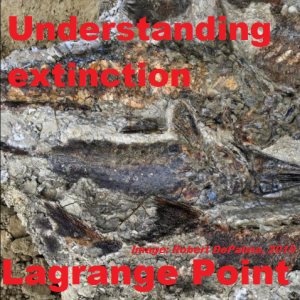
Monday Apr 01, 2019
Episode 320 - Extinction events and their causes
Monday Apr 01, 2019
Monday Apr 01, 2019
Life has been around on earth for a long time, but there have been many extinction events that have wiped out large numbers of species. This week we find out how scientists peel back the layers of rock to uncover what caused these extinction events. Plus we find out about current extinction events and what we can learn from the past to protect species today.
References:
- DePalma, Robert A.; Smit, Jan; Burnham, David; Kuiper, Klaudia; Manning, Phillip; Oleinik, Anton; Larson, Peter; Maurrasse, Florentin; Vellekoop, Johan; Richards, Mark A.; Gurche, Loren; Alvarez, Walter. Prelude to Extinction: a seismically induced onshore surge deposit at the KPg boundary, North Dakota. PNAS, 2019
- Ben C. Scheele et al. Amphibian fungal panzootic causes catastrophic and ongoing loss of biodiversity. Science, 2019 DOI: 10.1126/science.aav0379
- Seth A. Young, Andrew Kleinberg, Jeremy D. Owens. Geochemical evidence for expansion of marine euxinia during an early Silurian (Llandovery–Wenlock boundary) mass extinction. Earth and Planetary Science Letters, 2019; 513: 187 DOI: 10.1016/j.epsl.2019.02.023
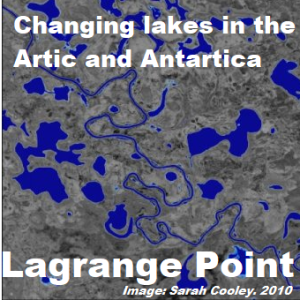
Monday Mar 25, 2019
Monday Mar 25, 2019
Trying to understand how the climate will change is difficult. For every big event like the break up of an ice shelf, there are thousands of little factors that play a role. Sometimes this little things turn into a torrent of a river, or a calm lake which can cause an entire continent to bend and flex. We find out about research into the Arctic Tundra and it's changing lakes which are one of the largest natural emitters of greenhouse gases. Plus ways to capture greenhouse gases and store them safely.
References:
- Alison F. Banwell, Ian C. Willis, Grant J. Macdonald, Becky Goodsell, Douglas R. MacAyeal. Direct measurements of ice-shelf flexure caused by surface meltwater ponding and drainage. Nature Communications, 2019; 10 (1) DOI: 10.1038/s41467-019-08522-5
- Sarah W. Cooley, Laurence C. Smith, Jonathan C. Ryan, Lincoln H. Pitcher, Tamlin M. Pavelsky. Arctic‐Boreal lake dynamics revealed using CubeSat imagery. Geophysical Research Letters, 2019; DOI: 10.1029/2018GL081584
- Fundação de Amparo à Pesquisa do Estado de São Paulo. (2019, February 13). Carbon gas storage cavern is the best way to obtain clean energy from a fossil fuel. ScienceDaily. Retrieved February 15, 2019 from www.sciencedaily.com/releases/2019/02/190213124358.htm
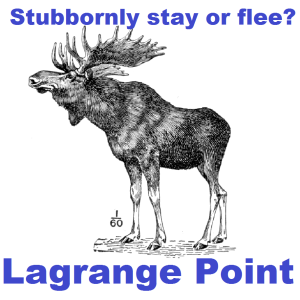
Monday Mar 18, 2019
Episode 318 - Stubborn Moose, repulsive smells and Otters with tools
Monday Mar 18, 2019
Monday Mar 18, 2019
We recap March Mamma Madness Round 1, and look at some latest science stories that relate. From what happens inside your brain when you smell a repulsive smell, to making the right call on fleeing or standing your ground. Plus we look at using archaeological techniques to help understand the history of animal tool use like with otters.
References:
- Ahmed A. M. Mohamed, Tom Retzke, Sudeshna Das Chakraborty, Benjamin Fabian, Bill S. Hansson, Markus Knaden, Silke Sachse. Odor mixtures of opposing valence unveil inter-glomerular crosstalk in the Drosophila antennal lobe. Nature Communications, 2019; 10 (1) DOI: 10.1038/s41467-019-09069-1
- Michael Haslam, Jessica Fujii, Sarah Espinosa, Karl Mayer, Katherine Ralls, M. Tim Tinker, Natalie Uomini. Wild sea otter mussel pounding leaves archaeological traces. Scientific Reports, 2019; 9 (1) DOI: 10.1038/s41598-019-39902-y
- B. A. Oates, J. A. Merkle, M. J. Kauffman, S. R. Dewey, M. D. Jimenez, J. M. Vartanian, S. A. Becker, J. R. Goheen. Antipredator response diminishes during periods of resource deficit for a large herbivore. Ecology, 2019; e02618 DOI: 10.1002/ecy.2618

